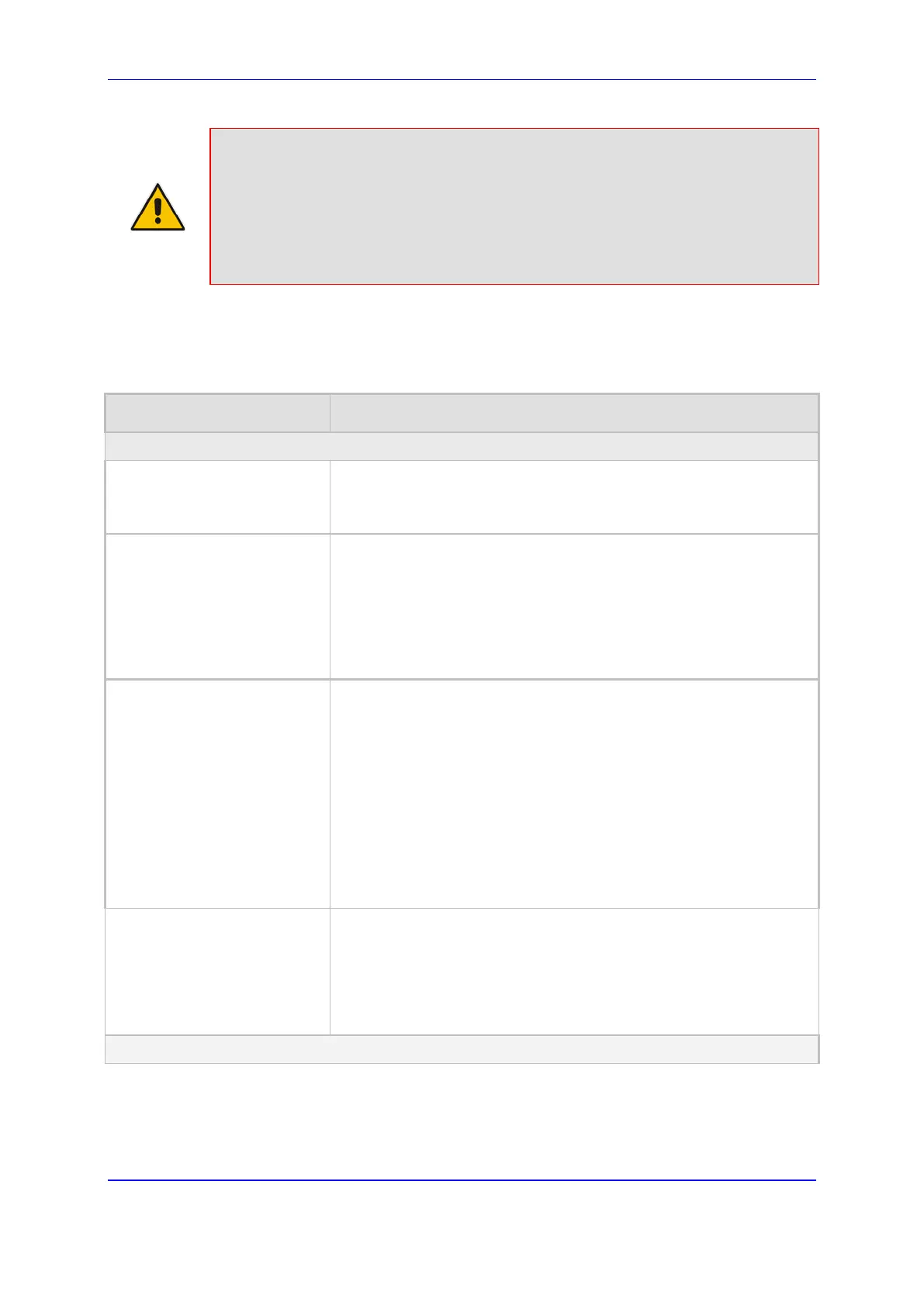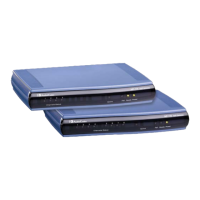Version 7.2 137 Mediant 1000B Gateway & E-SBC
User's Manual 12. Network
Note:
• If you edit or delete an IP interface, current calls using the interface are
immediately terminated.
• If you delete an IP interface, row indices of other tables (e.g., Media Realms table)
that are associated with the deleted IP interface, lose their association with the
interface ('Interface Name' field displays "None") and the row indices become
invalid.
To view configured IP network interfaces that are currently active, click the IP Interface
Status Table link located at the bottom of the table. For more information, see ''Viewing
Active IP Interfaces'' on page 835.
Table 12-5: IP Interfaces Table Parameters Description
Parameter Description
General
Index
network-if
[InterfaceTable_Index]
Defines an index number for the new table row.
Note: Each row must be configured with a unique index.
Name
name
[InterfaceTable_InterfaceNam
e]
Defines a name for the interface.
The valid value is a string of up to 16 characters. If you do not
configure a name, the device automatically assigns the name using
the syntax "InterfaceTable_<row index>". For example, if you add a
new interface to row index 2, the name is "InterfaceName_2". The
name of the default OAMP interface is "O+M+C+P".
Note: Each row must be configured with a unique name.
Application Type
application-type
[InterfaceTable_ApplicationTy
pes]
Defines the applications allowed on the IP interface.
[0] OAMP = Operations, Administration, Maintenance and
Provisioning (OAMP) applications (e.g., Web, Telnet, SSH, and
SNMP).
[1] Media = Media (i.e., RTP streams of voice).
[2] Control = Call Control applications (e.g., SIP).
[3] OAMP + Media = OAMP and Media applications.
[4] OAMP + Control = OAMP and Call Control applications.
[5] Media + Control = Media and Call Control applications.
[6] OAMP + Media + Control = All application types are allowed
on the interface.
Ethernet Device
underlying-dev
[InterfaceTable_UnderlyingDe
vice]
Assigns an Ethernet Device to the IP interface. An Ethernet Device is
a VLAN associated with a physical Ethernet port (Ethernet Group).
To configure Ethernet Devices, see Configuring Underlying Ethernet
Devices on page
132.
By default, no value is defined.
Note: The parameter is mandatory.
IP Address

